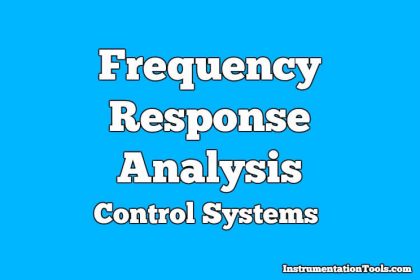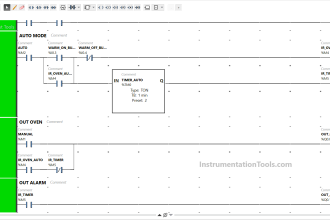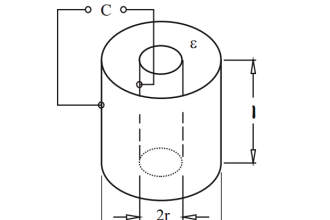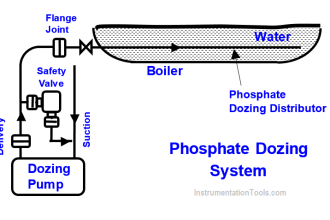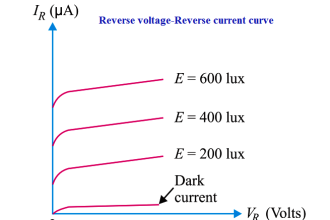pH Meters Questions & Answers
1. pH meters can be considered as voltage sources with which of the following internal resistances?
a) Very low resistance
b) Moderate resistance
c) Very high resistance
d) No resistance
Answer: c
Explanation: pH meters can be considered as voltage sources with very high internal resistance. In order to eliminate errors no current should flow from the source.
2. The electrodes used in pH measurement have which of the following internal resistances?
a) Very low resistance
b) Moderate resistance
c) Very high resistance
d) No resistance
Answer: c
Explanation: The electrodes used in pH measurement have very high internal resistance. It is of the order of 1000M ohm.
3. Which of the following is not a failure in pH meters?
a) Defective electrodes
b) Defective input circuitry
c) Defective electronic circuitry
d) Defective calibration
Answer: d
Explanation: Defective calibration is not a failure in pH meters. Failure occurs due to defective electrodes, defective input circuitry and defective electronic circuitry.
4. Which of the following is the simplest of pH meters?
a) Null-detector type pH meter
b) Direct reading type pH meter
c) Digital pH meter
d) Modern pH meter
Answer: a
Explanation: Null-detector type pH meter is the simplest of all pH meters. It is also known as the potentiometer type.
5. In which of the following ways can zero drift be reduced in pH meters?
a) Using filter
b) Giving zero adjustment arrangement
c) Keeping the input impedance high
d) Using balanced and differential amplifiers
Answer: d
Explanation: Zero drift be reduced in pH meters using balanced and differential amplifiers. Their response to external signals are additive and to internal noise are subtractive.
6. Which of the following can be used to provide automatic temperature compensation?
a) Proper insulation
b) Calibration for different temperatures
c) Thermistor
d) Thermometer
Answer: c
Explanation: To provide automatic temperature compensation, thermistors must be used. As temperature of the solution changes, the circuit constants are altered accordingly.
7. Which of the following is not the characteristic of null-detector type pH meter?
a) It can be battery operated
b) It has less accuracy
c) It is easy to maintain
d) Its electronic circuits are simple
Answer: b
Explanation: Null-detector type pH meter has greater accuracy than 0.01 pH. pH value is read from the calibrated precision voltage source dial.
8. Which of the following is not the characteristic of direct reading type pH meters?
a) Simple operation
b) Quick to use
c) Continuous indication output
d) It requires balancing process
Answer: d
Explanation: Direct reading type pH meters do not require balancing process. Its operation is simple and readings can be read directly.
9. Which of the following is not the characteristic of chopper amplifier pH meter?
a) Direct voltage from the electrodes is chopped at the main frequency
b) Using choppers for high-input resistance gives rise to spikes of waveforms at the output
c) It leads to stability in DC output of phase-sensitive rectifier
d) Magnitude of surge increases in the glass electrode output
Answer: c
Explanation: The use of chopper amplifier in pH meter leads to zero instability. It leads to various other problems for high-input resistance.
10. In which of the following ways can the disadvantages of chopper amplifier type pH meter be overcome?
a) Using zero corrected DC amplifier
b) Using modern design
c) Using digital design
d) Using vibrating condenser
Answer: d
Explanation: The disadvantages of chopper amplifier type pH meter can be overcome using a vibrating condenser. It is used in the place of the mechanical chopper.
11. The zero stability of vibrating condenser amplifier type pH meter is much better than direct coupled amplifier.
a) True
b) False
Answer: a
Explanation: The zero stability of vibrating condenser amplifier type pH meter is much better than direct coupled amplifier. The capacity can be changed by vibrating one of its plates.
12. In vibrating condenser amplifier type pH meter, to maintain good performance which of the following has to be done?
a) Frequency of the vibrator should be stable
b) Frequency of the vibrator should be constant
c) Amplitude of the vibrator should be constant
d) Both frequency and amplitude of the vibrator should be constant and stable
Answer: d
Explanation: In vibrating condenser amplifier type pH meter, to maintain good performance, both frequency and amplitude of the vibrator should be constant and stable.
13. If an instrument fails to balance at zero, it is most likely that the electrodes are defective.
a) True
b) False
Answer: b
Explanation: If an instrument fails to balance at zero, it is most likely that the electronic circuitry is defective. Errors may also occur due to leakage of capacitance.
14. Given below is the block diagram of digital pH meter. Identify the unmarked component.
a) Filter
b) Buffer
c) A/D converter
d) D/A converter
Answer: c
Explanation: The unmarked component is A/D converter. Microprocessor operates only on digital data. Electrodes give analog signals. Hence, A/D converter must be present.

